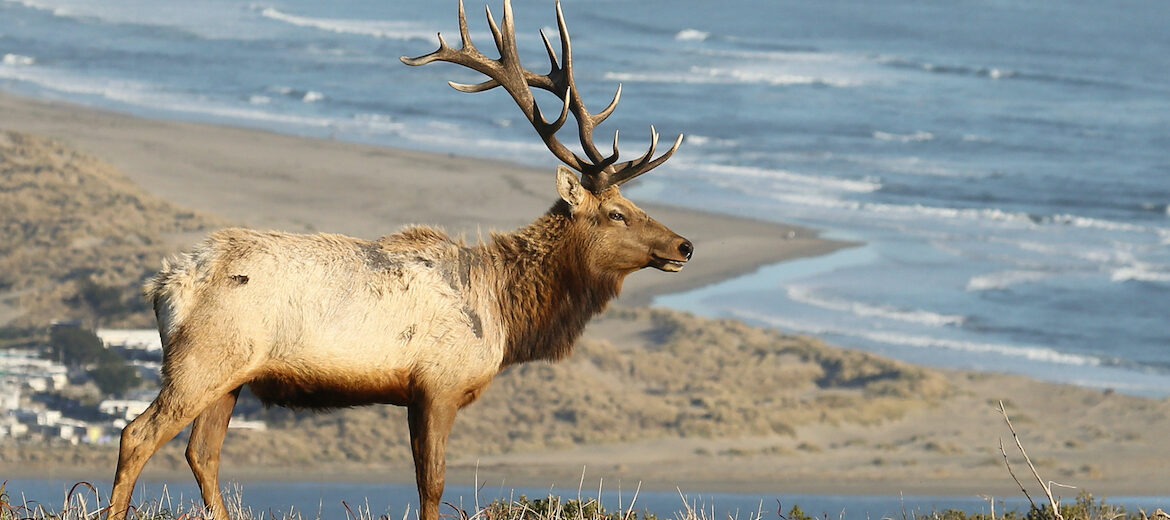
Native to California and the smallest of the elk subspecies, it’s the tule elk. These elk can be found in central California. In general, elk live in a variety of locales, like alpine meadows, rainforests, dry desert valleys, and hardwood forests. Tule elk are very social creatures, where the herd is the main point of their livelihood. Tule elk move about from place to place in search of food and water. They aren’t truly nomadic, but do travel relatively short distances to find sustenance. If there is plenty of food and no human disturbances, these elk will stay put.
First the Stats…
Scientific name: Cervus canadensis nannodes
Weight: Up to 400 lbs.
Length: Up to 7 feet
Height: Up to 5 feet, at the shoulder
Lifespan: Up to 12 years
Now on to the Facts!
1.) The dietary range consists of shrubs, grasses, tree bark, and twigs.
2.) Bulls shed and grow a new set of antlers every year!
3.) Their newly grown antlers are covered in a soft, fuzzy skin called velvet.
4.) By late summer the velvet has peeled away leaving the hardened standard antler look you’re used to seeing. By September the antlers are solid bone.
5.) Bulls are solitary or can live in bachelor groups.
But wait, there’s more on the tule elk!
6.) During the rut (mating season), cows and calves can be seen in groups called harems, with 1 or 2 adult bulls.
7.) Threatened elk lay their ears back, hold their heads up high, and flare their nostrils. They will sometimes even punch with their front hooves, snort, and make a load high-pitched squeal.
Did you know…?
Their top 2 canine teeth are referred to as ivories. It is believed that these “ivories” are remnants of sword-like tusks that ancient species of elk used for combat.
8.) Small numbers of tule elk in Point Reyes have tested positive for Mycobacterium avium subspecies paratuberculosis, a chronic wasting disease (CWD) known as Johne’s Disease.
9.) Elk are termed as, pretty much, the noisiest ungulates (hoofed animals), displaying danger calls. They use sound, in part to identify each other.
10.) These elk make a variety of sounds, including: barks, chirps, high-pitched squeals, and bugling.
11.) Ticks have recently been found to harbor prions of chronic wasting disease (CWD). See this article for more information.
Now a Short Tule Elk Video!
Also, check out the Critter Science YouTube channel. Videos added frequently!
Want to suggest a critter for me to write about? Let me know here.



